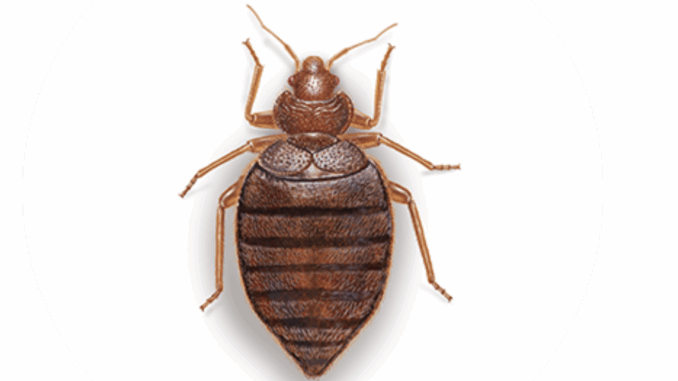
For travel photographers, hotels are more than just a place to sleep — they’re where gear is unpacked, batteries are charged, and images are downloaded. But one unwelcome hitchhiker can turn an assignment or personal trip into a nightmare: bed bugs. Unfortunately, hotels — whether budget or boutique — are a common battleground for these resilient pests. Here’s what every travel photographer should know about spotting, preventing, and dealing with bed bugs while on assignment.
A Global Problem
With international travel on the rise, bed bug infestations are being reported worldwide — from Paris to Seoul. In the United States, they’ve been found in all 50 states. According to Orkin’s 2025 Top 50 Bed Bug Cities List, Chicago has topped the list for five consecutive years, while Hartford, Connecticut jumped 48 spots to No. 35 — a sign that the problem continues to spread.
Contrary to popular belief, bed bugs aren’t a sanitation issue. They can infest five-star hotels just as easily as budget motels. They’ve also been reported on cruise ships, in private homes, and even on public transit. Wherever people travel, bed bugs follow.
Why Bed Bugs Matter to Travel Photographers
Bed bugs feed exclusively on blood — and their favorite targets are sleeping humans. Measuring only 3/16 of an inch long, they easily cling to luggage, camera bags, and clothing, traveling unnoticed between destinations.
Photographers are especially vulnerable. Padded camera bags, fabric straps, tripods with locking joints, and laptop sleeves all provide ideal hiding spots. Between flights, ride shares, hotels, homestays, and rental cars, your gear encounters countless soft surfaces in a short period of time — creating the perfect opportunity for an unwanted stowaway.
And beyond the inconvenience, bed bugs can ruin a shoot. Itching, swelling, and sleeplessness can make long shooting days miserable.
Before You Go: Research Beyond the Rating
Bed bugs don’t discriminate by destination — and neither should your research. Before booking, read recent hotel reviews from the past few months. Look for mentions of bed bugs, unclean rooms, or stained bedding. Even one or two credible complaints are reason enough to avoid a property, regardless of its overall rating.
A few extra minutes of research can save you from a ruined assignment and the stress of dealing with an infestation mid-trip.
On Arrival: Spot the Signs Before You Settle In
Even if you’re exhausted after a long day of shooting, make bed bug checks part of your travel routine. Before unpacking, grab a small flashlight and inspect the room.
Start with the bed. Check mattress seams, behind the headboard, furniture crevices, dresser drawers, drapes, and carpet edges near the walls. Adult bed bugs are visible to the naked eye — flat, oval, reddish-brown, and about the size of an apple seed. They avoid light, so you may only catch a quick glimpse as they scurry into hiding.
If you don’t see live bugs, look for evidence: tiny rusty or dark brown spots on sheets and papery, shed skins tucked along seams. Once you’ve seen these signs, they’re unmistakable.
If You Find Bed Bugs
If you discover bed bugs or signs them, photograph the evidence and notify hotel staff immediately. Experts recommend leaving the property altogether rather than switching rooms, since bed bugs can migrate through walls and ceilings — and even via cleaning equipment.
Protecting Your Gear
If you’re satisfied with your room inspection, be strategic with your setup. Keep luggage on hard surfaces like tables, luggage racks, or tile floors — never on carpet or upholstered furniture. Store camera bags elevated and zipped whenever possible.
Before checking out, do a quick flashlight inspection of your bags Run it along seams, strap joints, and pocket creases. A brief wipe-down with alcohol-based cloths can deter pests.
Bed bugs can survive for weeks in dark, padded cases without feeding. Treat your gear with the same care you’d give it in a dusty or sandy environment — clean, contained, and protected.
If You Get Bitten
Despite precautions, you might still wake up with bites — though they may not appear immediately. Reactions vary: some people develop itchy welts within hours, while others don’t see marks for several days.
Bites typically appear as small, red welts grouped in lines or clusters — often called the “breakfast, lunch, and dinner” pattern.
Document everything: photography the bites and any visible evidence. This can help if you need to file a complaint or insurance claim.
Treatment focuses on comfort. Over-the-counter hydrocortisone cream or antihistamines can reduce itching and swelling. Avoid scratching to prevent infection. Fortunately, bed bugs don’t transmit disease — the main concerns are irritation and sleep loss.
Before moving to your next hotel or returning home, isolate any clothing in sealed plastic bags until it can be washed and dried on high heat, Wipe down and vacuum your gear cases, and if necessary, quarantine them in sealed bags.
A Photographer’s Packing Plan
Packing smart can minimize your risk. Hard-shell luggage resists infestation better than fabric bags. Store clothing and fabric items in zippered pouches or packing cubes for an added layer of protection. Some photographers even carry a sealed “clean outfit” to change into if they discover an infestation — ensuring at least one safe set of clothes remain untouched.
Final Frame
Photographers are trained observers — we notice the details others miss. That same eye for detail can protect your gear, your health, and your next assignment. By packing wisely, inspecting carefully, and responding quickly if bites occur, you can safeguard both your work and your well-being —and keep your focus exactly where it belongs — on capturing unforgettable images.
